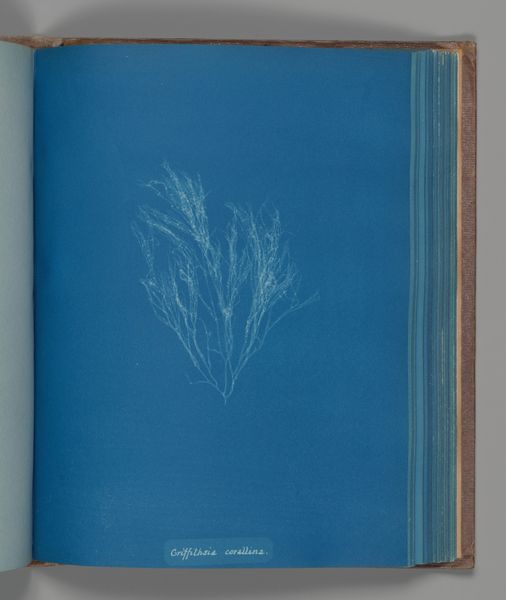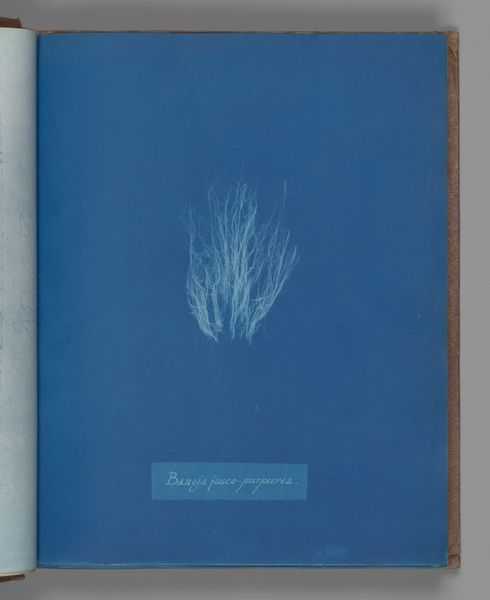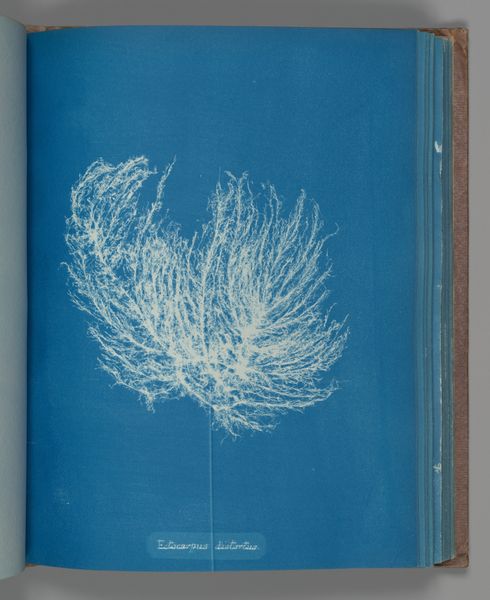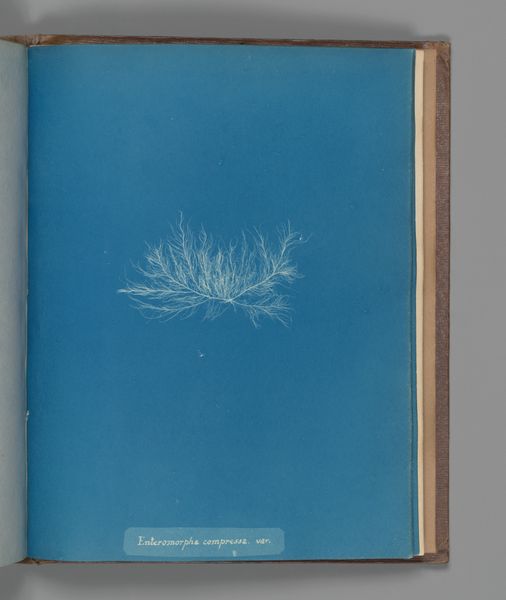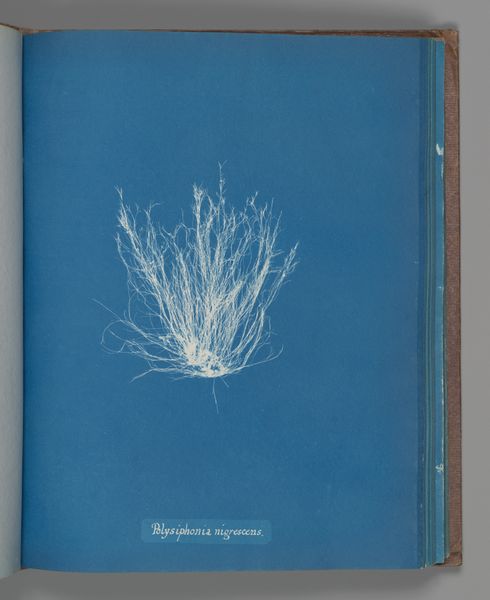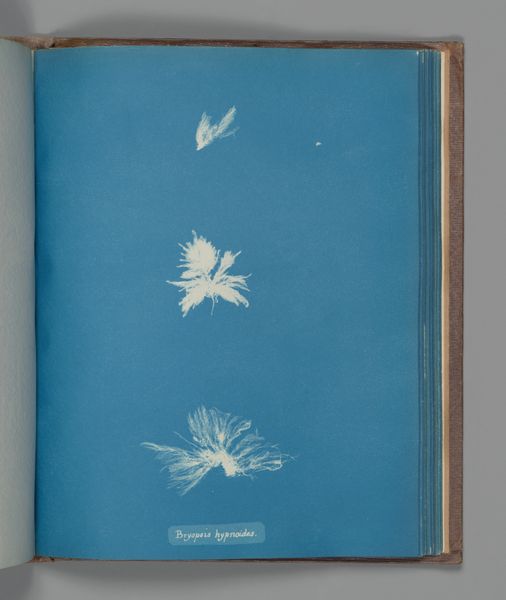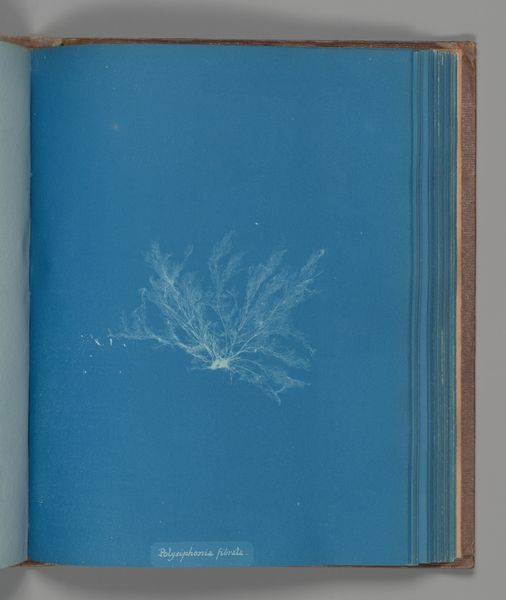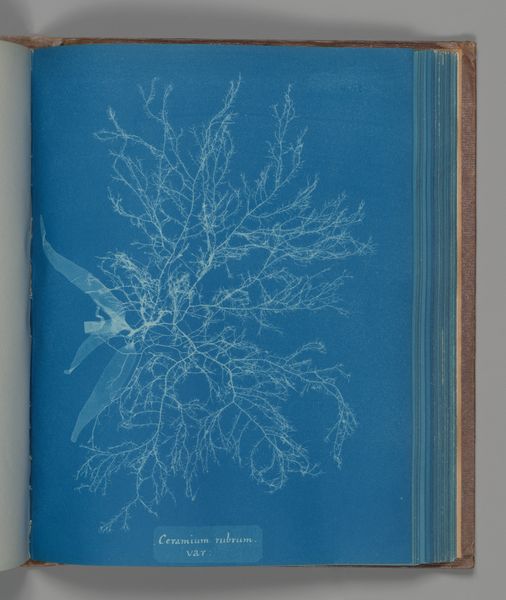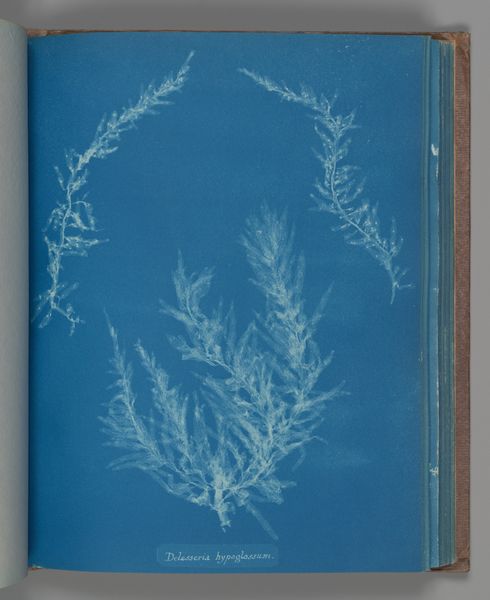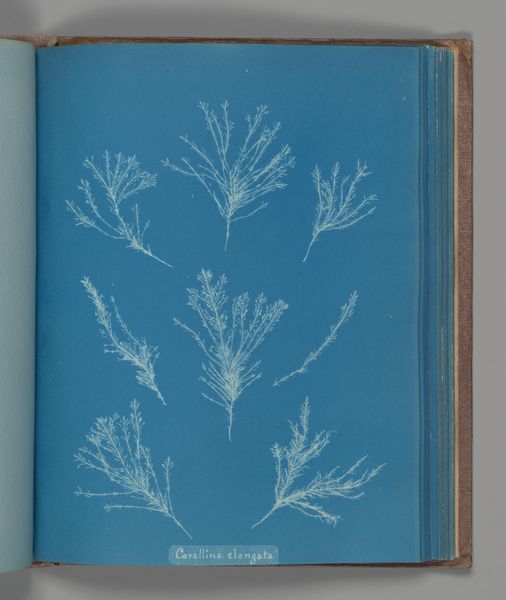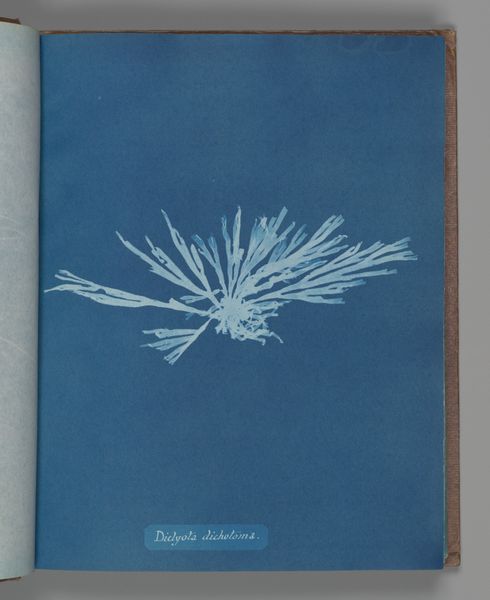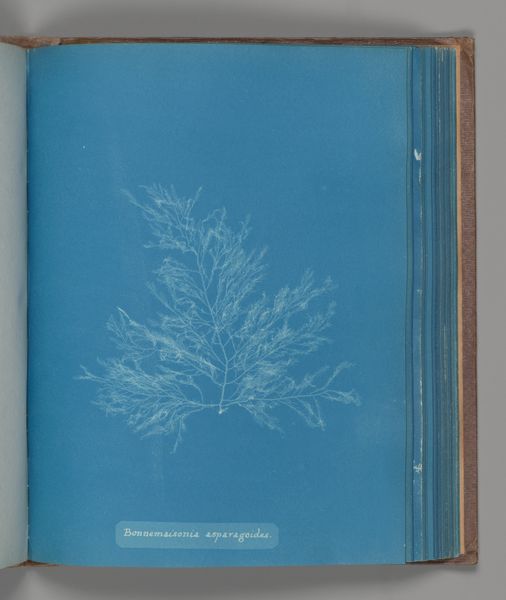
print, paper, cyanotype, photography
#
aged paper
#
still-life-photography
#
book binding
#
paper non-digital material
#
paperlike
# print
#
book design
#
paper
#
cyanotype
#
photography
#
book mockup
#
children publication design
#
magazine mockup
#
publication mockup
#
naturalism
#
publication design
Dimensions: Image: 25.3 x 20 cm (9 15/16 x 7 7/8 in.)
Copyright: Public Domain
This cyanotype of Polysiphonia byssoides, or red algae, was created by Anna Atkins in the 1840s, using a process that combined art and science. Atkins’ work existed in the cultural context of Victorian England, a period marked by significant scientific advancements and a growing interest in natural history. As photography emerged as a new medium, it was quickly embraced by scientists for its ability to accurately document the natural world. The production of her work was rooted in the scientific community; Atkins was a botanist and her aim in creating the cyanotypes was to provide detailed illustrations for scientific study. Yet, her images transcend mere scientific documentation; they are also works of art. Understanding Atkins' cyanotypes requires access to resources that help us appreciate both the scientific and artistic contexts of her work. It’s a reminder that art's meaning is always shaped by the social and institutional conditions of its time.
Comments
No comments
Be the first to comment and join the conversation on the ultimate creative platform.
